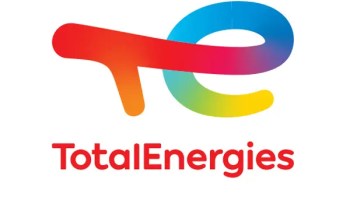Nigeria, Mexico, and the United States accounted for most of the decline in global gas flaring in 2022. While two other countries—Kazakhstan and Colombia— stand out for consistently reducing flaring volumes in the last seven years.
President Muhammadu Buhari declared 2020 as “The Year of Gas” in Nigeria, it was a bold statement to demonstrate to the Administration’s resolve that gas development & utilization should be a national priority. It went a step further to dedicate this decade to industrializing Nigeria using gas.
This may have started to manifest in greater utilization of gas in the country, hence a reduction in gas flaring.
Nigeria’s largely untapped, natural gas resources could provide the means for the country to fund its way through the global energy transition.
One of the country’s major efforts here is the Ajaokuta–Kaduna–Kano Natural Gas Pipeline set for completion in 2023. The government hopes it will connect the country’s gas supply to other planned trans-regional and intercontinental pipelines, such as the Trans-Saharan Gas Pipeline, in order to open up access to Europe.
Lack of infrastructure has historically hampered the Nigerian energy sector and represents a crucial reason why its gas reserves have been untapped for so long. This pipeline project could fundamentally alter the calculus, and also help the country meet its growing electricity needs in a cleaner, more sustainable manner.
According to the latest Global Gas Flaring Tracker Report, a leading global and independent indicator of gas flaring finds that global gas flaring decreased by three percent to 139 bcm in 2022 from 144 bcm in 2021.
Oil production increased by 5 percent to 80 million barrels per day (bbl/d) from 77 bbl/d in 2021. As a result, the global average flaring intensity—the amount of gas flared per barrel of oil produced—dropped to 4.7 m3/bbl in 2022 from 5.1 m3/bbl in 2021.
The top nine flaring countries continue to be responsible for the vast majority of flaring. Russia, Iraq, Iran, Algeria, Venezuela, the United States, Mexico, Libya, and Nigeria account for nearly three-quarters of flare volumes and just under half of global oil production.
“This wasted gas could displace dirtier energy sources, increase energy access in some of the world’s poorest countries, and provide many countries with much-needed energy security. If put to productive purposes, the amount of gas flared in 2022, could generate as much electricity as Sub-Saharan Africa currently produces in a year.”
Decreased Russian gas exports to the European Union (EU) did not increase gas flaring in Russia. In 2022, the EU significantly increased its liquified natural gas imports from the United States, Angola, Norway, Qatar, and Egypt, and via pipeline from Azerbaijan and Norway. Of these countries supplying gas to the EU, the United States and Angola have made notable progress commercializing associated gas streams and increasing LNG export.
GGFR estimates that in 2022 gas flaring released 357 million tonnes of CO2e, 315 million tonnes in the form of carbon dioxide, and 42 million tonnes CO2e in the form of methane. Methane, the primary component of natural gas, is a potent but short-lived greenhouse gas, with a warming potential much higher than carbon dioxide.
The oil and gas industry is a significant source of methane emissions globally. Reducing methane emissions is one of the most crucial climate actions that can be undertaken in the short term.
The Tracker Report also highlights the significant uncertainty surrounding the methane emissions from gas flaring. If the average flare is just 5 percentage points less efficient in burning the gas than generally assumed, then globally, the amount of methane released would be three times higher than currently estimated.
Gas flaring, the burning of natural gas associated with oil extraction, takes place due to a range of issues, from market and economic constraints to a lack of appropriate regulation and political will. However, alongside the countries that continued to reduce flaring in 2022, several other countries— including Algeria and Egypt—provide hope that they will follow suit and that their efforts to reduce flaring will accelerate as the key ingredients for success, such as effective regulation and enforcement, political will, and infrastructure are put in place.
Nigeria, Mexico, and the United States accounted for most of the decline in global gas flaring in 2022. While two other countries—Kazakhstan and Colombia— stand out for consistently reducing flaring volumes in the last seven years.
President Muhammadu Buhari declared 2020 as “The Year of Gas” in Nigeria, it was a bold statement to demonstrate to the Administration’s resolve that gas development & utilization should be a national priority. It went a step further to dedicate this decade to industrializing Nigeria using gas.
This may have started to manifest in greater utilization of gas in the country, hence a reduction in gas flaring.
Nigeria’s largely untapped, natural gas resources could provide the means for the country to fund its way through the global energy transition.
One of the country’s major efforts here is the Ajaokuta–Kaduna–Kano Natural Gas Pipeline set for completion in 2023. The government hopes it will connect the country’s gas supply to other planned trans-regional and intercontinental pipelines, such as the Trans-Saharan Gas Pipeline, in order to open up access to Europe.
Lack of infrastructure has historically hampered the Nigerian energy sector and represents a crucial reason why its gas reserves have been untapped for so long. This pipeline project could fundamentally alter the calculus, and also help the country meet its growing electricity needs in a cleaner, more sustainable manner.
According to the latest Global Gas Flaring Tracker Report, a leading global and independent indicator of gas flaring finds that global gas flaring decreased by three percent to 139 bcm in 2022 from 144 bcm in 2021.
Oil production increased by 5 percent to 80 million barrels per day (bbl/d) from 77 bbl/d in 2021. As a result, the global average flaring intensity—the amount of gas flared per barrel of oil produced—dropped to 4.7 m3/bbl in 2022 from 5.1 m3/bbl in 2021.
The top nine flaring countries continue to be responsible for the vast majority of flaring. Russia, Iraq, Iran, Algeria, Venezuela, the United States, Mexico, Libya, and Nigeria account for nearly three-quarters of flare volumes and just under half of global oil production.
“This wasted gas could displace dirtier energy sources, increase energy access in some of the world’s poorest countries, and provide many countries with much-needed energy security. If put to productive purposes, the amount of gas flared in 2022, could generate as much electricity as Sub-Saharan Africa currently produces in a year.”
Decreased Russian gas exports to the European Union (EU) did not increase gas flaring in Russia. In 2022, the EU significantly increased its liquified natural gas imports from the United States, Angola, Norway, Qatar, and Egypt, and via pipeline from Azerbaijan and Norway. Of these countries supplying gas to the EU, the United States and Angola have made notable progress commercializing associated gas streams and increasing LNG export.
GGFR estimates that in 2022 gas flaring released 357 million tonnes of CO2e, 315 million tonnes in the form of carbon dioxide, and 42 million tonnes CO2e in the form of methane. Methane, the primary component of natural gas, is a potent but short-lived greenhouse gas, with a warming potential much higher than carbon dioxide.
The oil and gas industry is a significant source of methane emissions globally. Reducing methane emissions is one of the most crucial climate actions that can be undertaken in the short term.
The Tracker Report also highlights the significant uncertainty surrounding the methane emissions from gas flaring. If the average flare is just 5 percentage points less efficient in burning the gas than generally assumed, then globally, the amount of methane released would be three times higher than currently estimated.
Gas flaring, the burning of natural gas associated with oil extraction, takes place due to a range of issues, from market and economic constraints to a lack of appropriate regulation and political will. However, alongside the countries that continued to reduce flaring in 2022, several other countries— including Algeria and Egypt—provide hope that they will follow suit and that their efforts to reduce flaring will accelerate as the key ingredients for success, such as effective regulation and enforcement, political will, and infrastructure are put in place.
Nigeria, Mexico, and the United States accounted for most of the decline in global gas flaring in 2022. While two other countries—Kazakhstan and Colombia— stand out for consistently reducing flaring volumes in the last seven years.
President Muhammadu Buhari declared 2020 as “The Year of Gas” in Nigeria, it was a bold statement to demonstrate to the Administration’s resolve that gas development & utilization should be a national priority. It went a step further to dedicate this decade to industrializing Nigeria using gas.
This may have started to manifest in greater utilization of gas in the country, hence a reduction in gas flaring.
Nigeria’s largely untapped, natural gas resources could provide the means for the country to fund its way through the global energy transition.
One of the country’s major efforts here is the Ajaokuta–Kaduna–Kano Natural Gas Pipeline set for completion in 2023. The government hopes it will connect the country’s gas supply to other planned trans-regional and intercontinental pipelines, such as the Trans-Saharan Gas Pipeline, in order to open up access to Europe.
Lack of infrastructure has historically hampered the Nigerian energy sector and represents a crucial reason why its gas reserves have been untapped for so long. This pipeline project could fundamentally alter the calculus, and also help the country meet its growing electricity needs in a cleaner, more sustainable manner.
According to the latest Global Gas Flaring Tracker Report, a leading global and independent indicator of gas flaring finds that global gas flaring decreased by three percent to 139 bcm in 2022 from 144 bcm in 2021.
Oil production increased by 5 percent to 80 million barrels per day (bbl/d) from 77 bbl/d in 2021. As a result, the global average flaring intensity—the amount of gas flared per barrel of oil produced—dropped to 4.7 m3/bbl in 2022 from 5.1 m3/bbl in 2021.
The top nine flaring countries continue to be responsible for the vast majority of flaring. Russia, Iraq, Iran, Algeria, Venezuela, the United States, Mexico, Libya, and Nigeria account for nearly three-quarters of flare volumes and just under half of global oil production.
“This wasted gas could displace dirtier energy sources, increase energy access in some of the world’s poorest countries, and provide many countries with much-needed energy security. If put to productive purposes, the amount of gas flared in 2022, could generate as much electricity as Sub-Saharan Africa currently produces in a year.”
Decreased Russian gas exports to the European Union (EU) did not increase gas flaring in Russia. In 2022, the EU significantly increased its liquified natural gas imports from the United States, Angola, Norway, Qatar, and Egypt, and via pipeline from Azerbaijan and Norway. Of these countries supplying gas to the EU, the United States and Angola have made notable progress commercializing associated gas streams and increasing LNG export.
GGFR estimates that in 2022 gas flaring released 357 million tonnes of CO2e, 315 million tonnes in the form of carbon dioxide, and 42 million tonnes CO2e in the form of methane. Methane, the primary component of natural gas, is a potent but short-lived greenhouse gas, with a warming potential much higher than carbon dioxide.
The oil and gas industry is a significant source of methane emissions globally. Reducing methane emissions is one of the most crucial climate actions that can be undertaken in the short term.
The Tracker Report also highlights the significant uncertainty surrounding the methane emissions from gas flaring. If the average flare is just 5 percentage points less efficient in burning the gas than generally assumed, then globally, the amount of methane released would be three times higher than currently estimated.
Gas flaring, the burning of natural gas associated with oil extraction, takes place due to a range of issues, from market and economic constraints to a lack of appropriate regulation and political will. However, alongside the countries that continued to reduce flaring in 2022, several other countries— including Algeria and Egypt—provide hope that they will follow suit and that their efforts to reduce flaring will accelerate as the key ingredients for success, such as effective regulation and enforcement, political will, and infrastructure are put in place.





